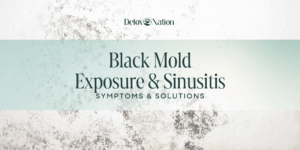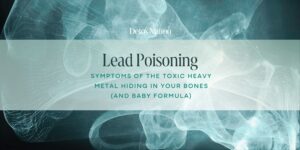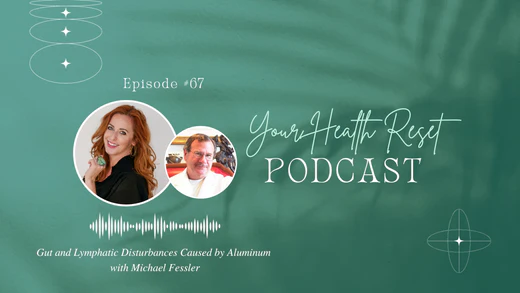Dental amalgam fillings contain dental mercury, which can release toxic vapors over time. If you’re experiencing unexplained health issues, chronic mercury poisoning from fillings could be a hidden culprit.
You know that feeling when you’re doing “everything right” for your health, but you still don’t feel good?
Maybe it’s chronic fatigue, brain fog that makes you forget why you walked into a room (again), or a nervous system that’s stuck in overdrive.
It’s frustrating, but here’s the thing—you might be dealing with mercury toxicity, and no one ever warned you about it.
Mercury is sneaky.
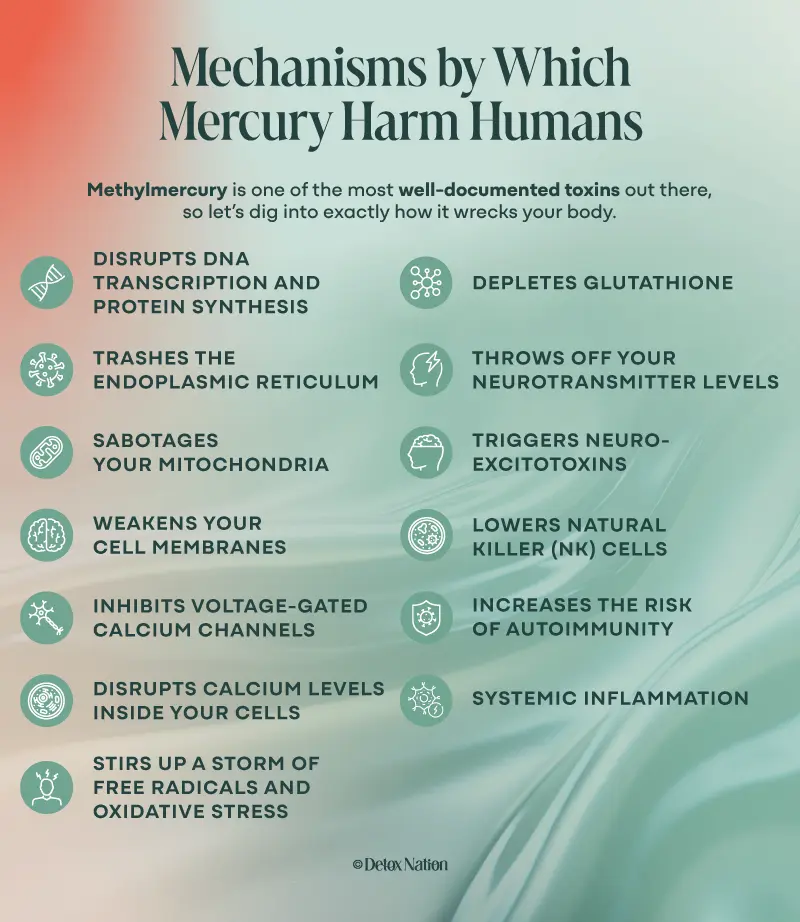
It’s been in our dental fillings, our seafood, our vaccines, and even the air we breathe.
It crosses the blood-brain barrier, hijacks your body’s detox pathways, and settles in for the long haul—sometimes for decades.
And if you’ve ever had a silver filling, congratulations (not really)—you’ve been unknowingly microdosing a neurotoxin every single day.
And to make things worse, most mainstream detox advice? Flat-out wrong.
But here’s the good news: this sucks, but it’s fixable.
Your body is always healing (otherwise, you’d be dead), and once you know where mercury hides and how it disrupts your health, you can take real, practical steps to get it out—the right way.
Let’s buckle in and learn about mercury – the types, the mechanisms by which it causes harm, the symptoms, and common detox mistakes.
Key Takeaways:
- Mercury is a potent toxin.
- You’re exposed to mercury through the air, water, food, and your dental fillings.
- There is a right way and a wrong way to detox from mercury!
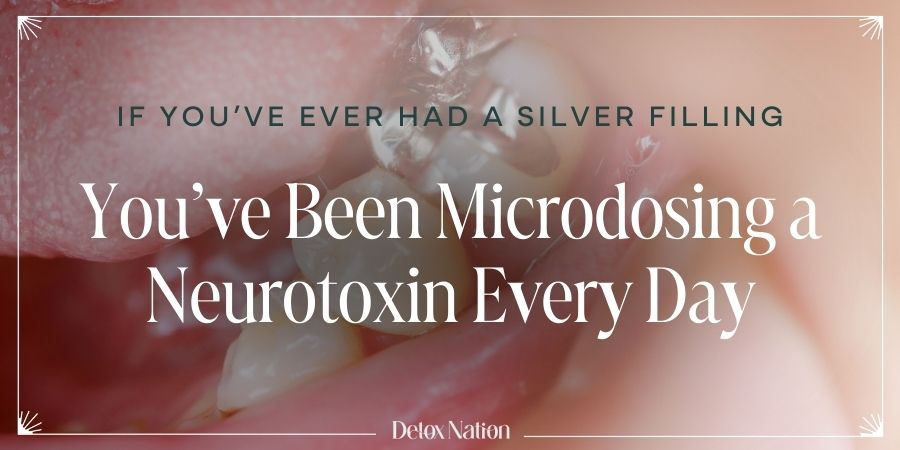
Interesting Facts About Toxic Mercury
- The use of mercury in dentistry has been controversial since the 1800’s! In 1840, the American Society of Dental Surgeons (precursor to the American Dental Association), had its members sign a pledge not to use this toxic material (1, 6, 23).
- The Environmental Protection Agency didn’t classify mercury as a hazardous substance until 1989 (6)!
- The chemical abbreviation for mercury is Hg. This comes from the Greek word Hydrargyrum, which means silver water.
- More than 1,000 TONS of elemental mercury are found in the teeth of Americans (23).
- In Southern Florida, the rate of environmental release is 995 to 1249 kg per year (17). Of this, 160 kg per year are released from medical waste and crematoriums (17).
- While it can be deposited almost anywhere in the body, mercury that is deposited in the brain can have a half-life measured in decades (22).
- You can eliminate about 1% of your total body burden of methyl mercury per day (31).
- Norway and Sweden no longer use mercury amalgams in dentistry. Denmark and Germany use it less than 10% of the time. Many other countries are looking to phase it out, including the Czech Republic, Slovakia, Nepal, Bangladesh, Finland and Ireland (23).
- Mad as a hatter? Mercury is a well-known neurotoxin. In the 1700 – 1900s, pins used by hat makers were routinely coated with mercury. Since hatmakers would hold the pins in their mouths, this subjected them to chronic mercury poisoning. It was called “Mad Hatter’s Disease.”
- Increased mercury levels (hair, nails, blood, or urine) are associated with a higher risk of melanoma, prostate cancer, kidney cancer, lung cancer, and all skin cancers (26).
- Mercury Sulfide, aka Vermilion Red, is used in tattoo dyes (3).
- The amount of mercury in the oceans has tripled since the Industrial Revolution (7).

Types and Sources of Mercury
Not all mercury is the same. Understanding the different types of mercury can help clarify its sources and impacts.
There are several types of inorganic mercury – this is mercury by itself or combined with other types of chemical elements such as chlorine or oxygen.
Metallic or Elemental Mercury
This is the form found in the Earth’s crust, amalgam fillings, and thermometers.
It can off gas from rocks and volcanoes and is released during mining operations (3, 4).
From there, it settles in water (surface water, ground water, lakes, rivers, oceans, etc.) and then can be converted to organic mercury (4, 14).
When oxidized, elemental mercury forms mercuric mercury (4).
Dental amalgams are roughly 50% elemental mercury by weight (3, 4, 5, 16, 22).
It vaporizes easily at room temperature, making inhalation a major risk.
And your mouth is hotter than room temperature!
Once absorbed, it targets the brain and nervous system and crosses the blood-brain-barrier (3, 4, 22).
Metallic mercury is also deposited in the placenta, fetal brain, breast milk, thyroid, breast, adrenal glands, liver, heart, skin, sweat glands, kidneys, lungs, testes, pancreas, prostate, T-cells, and salivary glands (3, 4)!
You read that right – Mom can be a significant source of exposure for the baby!
And did you also notice that it likes organs involved in drainage and detoxification? The very organs and systems that can help protect you become toxic with mercury.
That’s just fantastic.
Mercury Vapor (Hg0)
While some people are exposed to mercury vapor through their job, the most common exposure is through dental amalgam (silver) fillings (4, 6).
Approximately 2-28 micrograms of mercury vapor per silver filling surface, per day is released, and we absorb almost 80% of that via inhalation (3, 4, 5, 6, 16).
This amount can be increased by consuming hot items, chewing, and teeth-grinding.
Seriously, look at the famous “smoking tooth video” showing the off gassing of mercury from a filling.
Mercury also off gasses during receiving, repairing, or removing silver dental amalgam fillings – this is why using a mercury-trained biological dentist is non-negotiable! Find one here.
The mercury vapor binds to certain sulfur-containing molecules in the body and is transported to the brain, lungs, liver, kidneys, and gut where it can be converted to inorganic mercury in the cells (4, 6, 22).
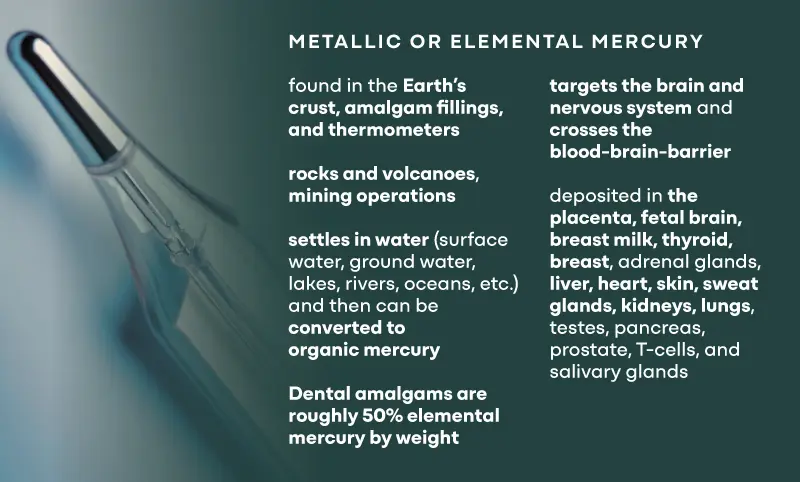
Mercury Salts, such as mercurous (Hg2++) and mercuric (Hg++)
Mercurous mercury (Hg2++) is a transitional form of mercury seen when metallic mercury converts to mercuric mercury (Hg++).
Mercuric mercury is found in film developing chemicals, skin lightening creams, and is also used as a preservative (4).
Mercury Chloride, another salt, is used as a fungicide and as a laxative known as Calomel (4, 9).
Approximately 2% of ingested mercuric is absorbed. From there, it likes to piggy-back on red blood cells, glutathione, or a few other molecules.
I know that doesn’t sound like much, but it’s another source of exposure. When you add it all together, the effects can be simply devastating.
Mercury salts accumulate in fetal tissues (including the amniotic sac and the placenta), the brain, kidneys, liver, skin, and testes (4).
They are mostly excreted via stool and urine, with lesser amounts being excreted through tears, breast milk, sweat, and saliva (4).
Additionally, we have to consider organic mercury, which is the combination of mercury and carbon-containing compounds.
Methylmercury (MeHg)
Methylmercury—yep, the nasty form of mercury that builds up in seafood, especially big fish like tuna and swordfish—loves to mess with your brain, particularly in developing babies and kids (4).
It’s classified as a Possible Human Carcinogen [Group 2B] (14).
Begin Your Healing Journey - Let's Talk About Your Path Forward
While this consultation is complimentary for you, we’ve set aside this time specifically for your needs. We appreciate your commitment to showing up prepared and on time, just as we promise to be fully present for you. 📅 Ready to take a step toward feeling better?
Schedule your conversation with us today.Once it’s in you, about 80% of it gets absorbed through your gut or skin, where it latches onto the amino acid cysteine like a stage-five clinger (4).
From there, it doesn’t just hang out in one spot—it spreads through your brain, kidneys, liver, bone marrow, nerves, and even crosses the placenta (yikes). (4)
Cord blood mercury levels are often higher than maternal blood levels (7).
Sadly, about 90% of the mercury in your body is stored as methylmercury (13).
And here’s the kicker: the half-life of methylmercury is about 70 days, meaning if you eat a high-mercury meal today, it’ll take around 140 days to fully clear that dose (4).
Over time, your body tries to break it down into inorganic mercury (which is also toxic, just in a different way), and about 90% of what gets kicked out leaves via your stool (4).
So, yes—pooping is detox.
Let’s make this more concrete: The EPA states that the maximum “safe” dose of methylmercury is 0.045 micrograms per pound of body weight (4).
But come on—given what you’ve learned so far—is there really any such thing as a “safe dose?”
If you weigh 100 pounds, that means your “safe dose” is 4.5 micrograms.
If you weigh 200 pounds, your “safe dose” is 9 micrograms.
For perspective, consider the following 3-ounce servings of tuna:
- Canned light tuna contains 10.71 micrograms (32)
- Canned Albacore tuna contains 29.75 micrograms (32)
- Fresh or frozen Yellowfin tuna contains 30.09 micrograms of methylmercury (32)
When you add this to your exposures from air, water, soil, and your dental fillings, you may have a huuge problem!
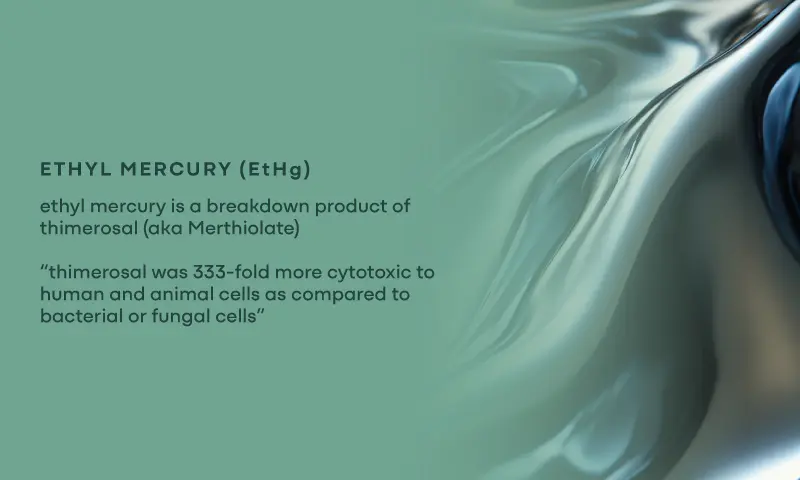
Ethyl mercury (EtHg)
A less common form, ethyl mercury is a breakdown product of thimerosal (aka Merthiolate), a preservative once widely used to prevent bacterial and mold growth in vaccines and other pharmaceutical products (4, 16, 35).
A 2023 study found “thimerosal was 333-fold more cytotoxic to human and animal cells as compared to bacterial or fungal cells (35).”
(Meaning, it impacts our cells before it impacts bacterial or fungal growth.)
While it clears from the bloodstream faster than methylmercury, its potential neurotoxic effects are still concerning.
Understanding these types highlights why mercury exposure from different sources can have varied effects, but all forms pose serious risks to health.
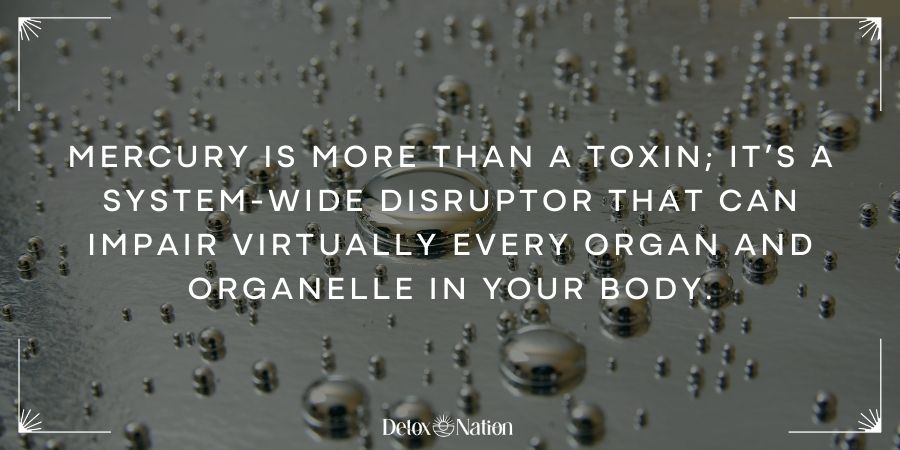
Health Effects of Exposure to Mercury on Specific Body Organs or Systems
Mercury isn’t just a toxin; it’s a system-wide disruptor.
All forms of mercury poison cellular function, hijack vital molecules (looking at you, sulfhydryl groups), and alter protein structures.
Therefore, it can impair the function of virtually every organ and organelle.
Let’s look at some examples.
1. The Thyroid and Chronic Mercury Toxicity
Your thyroid gland is a powerhouse for your metabolism, energy levels, and mood.
Unfortunately, it’s also highly vulnerable to mercury exposure.
Why?
The thyroid sits near your mouth, and it’s fed by a rich blood supply that can carry mercury straight from your fillings.
So, mercury likes to bioaccumulate (build up) in the thyroid gland (26).
Mercury binds to essential enzymes and impairs the gland’s ability to function, leading to symptoms like fatigue, weight gain, hair loss, and mood swings.
Mercury is found in the thyroids of over a third of people over the age of 60 (19).
Since mercury can trigger oxidative stress, inflammation, and auto-immunity, it may play a causal role in hypothyroidism, autoimmune thyroid issues, and thyroid cancer (19, 26).
2. The Nervous System
Mercury crosses the blood-brain barrier, meaning it can settle in your brain and wreak havoc.
This is where the neurotoxic effects become apparent, causing symptoms like brain fog, anxiety, emotional swings, and even conditions that resemble autism or OCD.
Long-term exposure can lead to more severe issues like memory loss and difficulty concentrating.
3. The Digestive System
Your gut lining is another target.
Mercury is corrosive to organ linings and can upset your gut’s delicate balance.
Many people with mercury toxicity experience GERD, leaky gut, or other persistent digestive problems.
Even worse, mercury toxicity can fuel overgrowths of Candida and other opportunistic pathogens, as your body uses yeast to stabilize mercury and prevent it from causing more damage. (More on this later!)
4. The Immune System
Mercury’s impact on the immune system is profound.
It weakens your body’s defenses while simultaneously creating a breeding ground for chronic infections.
It’s no wonder so many people with mercury poisoning feel constantly run down and susceptible to every bug that’s going around.
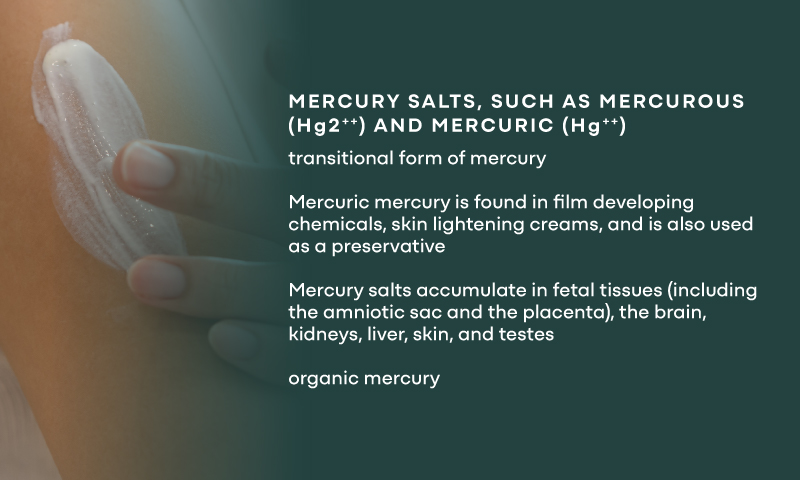
5. The Reproductive System
Mercury can damage the ovaries and the testes, directly impacting reproduction.
Its impact to the thyroid gland can also decrease fertility.
In animal studies, mercury exposure has been found to decrease estrogen production and follicle development (27).
And when mercury teams up with arsenic (a truly toxic duo), the risks get even worse: increased miscarriages, stillbirths, premature births, low birth weight, and birth defects (7).
Not exactly the kind of legacy you want to pass on.
What are the Symptoms of Mercury Exposure?
Inorganic Mercury Exposure Symptoms (Like from Dental Amalgam Fillings)
Low-dose exposure to mercury vapor, known as micromercurialism, can cause weakness, fatigue, loss of appetite, weight loss, GI disturbances, and neurological dysfunction (4).
Higher exposures (like from silver fillings in your mouth) present with tremors, personality and behavioral changes, memory loss, insomnia, depression, loss of color vision, loss of visual acuity, decreased coordination, increased anger, irritability, and anxiety, gingivitis, multi-joint pain, lipid peroxidation, high blood pressure, atherosclerosis, heart attack, and stroke (2, 4, 22).
Sound familiar?
While less common, acute exposure to mercury salts can cause abdominal pain, vomiting, bloody diarrhea, protein precipitation, cell death of the gut mucosa, cell death of kidney cells, asthma, dermatitis, peritonitis, and sepsis (4).
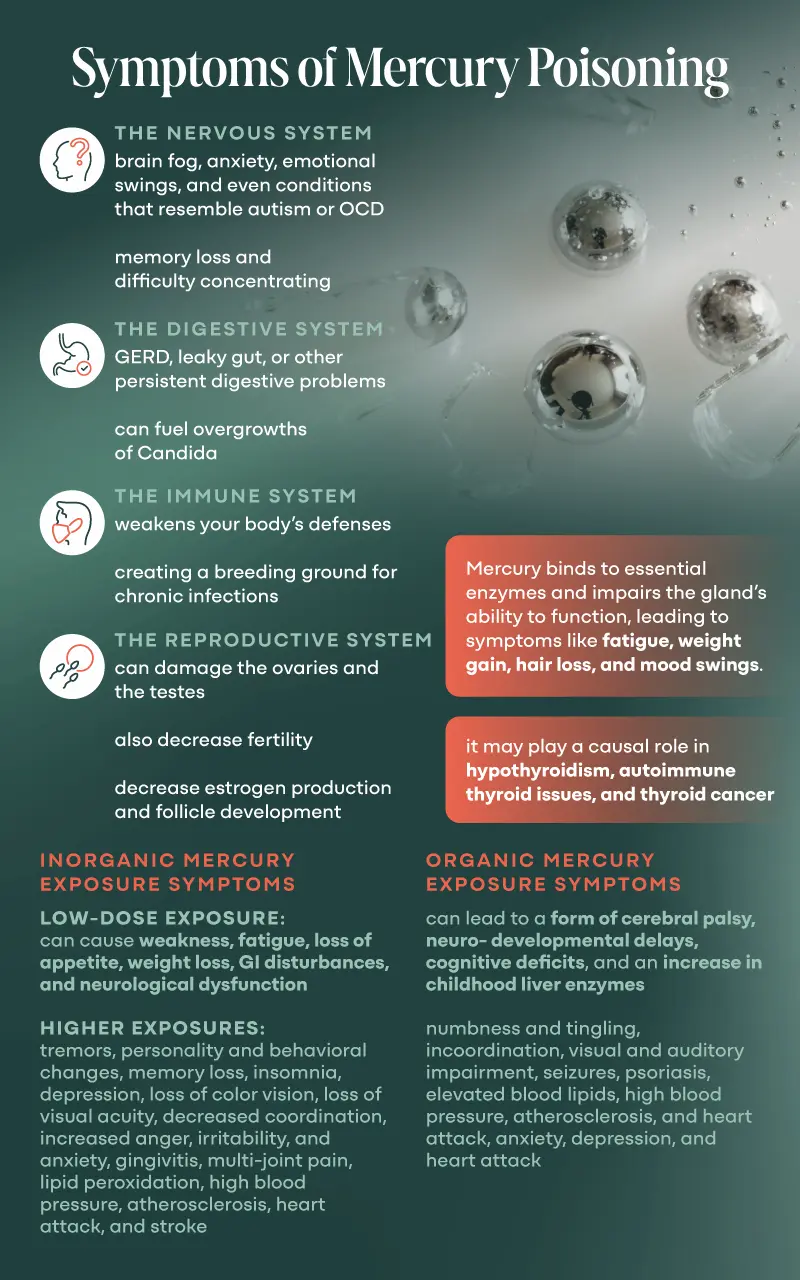
Organic Mercury Exposure Symptoms (Like from Seafood)
Prenatal methylmercury exposure? Yup.
One lesser-known source of mercury exposure?
Your Mom.
Methylmercury can pass through the placenta during pregnancy and through breast milk, meaning that maternal fillings can contribute to a child’s mercury burden before they’re even born.
This can lead to a form of cerebral palsy (4), neurodevelopmental delays (4, 7), cognitive deficits (4, 7), and an increase in childhood liver enzymes (8).
Exposure to methylmercury as from seafood, can cause: numbness and tingling, incoordination (3), visual and auditory impairment (3), seizures, psoriasis (24, 25), elevated blood lipids (3, 20, 28), high blood pressure, atherosclerosis, and heart attack (3, 20), anxiety, depression, and heart attack (3, 15).
What are YOUR Symptoms?
It depends.
There are between 150 and 300 known symptoms of mercury toxicity.
Which forms of mercury are you exposed to, and in what amounts?
Are you (or have you been) exposed to other heavy metals? Mold? Parasites? EMFs?
What about your age, your gender, and your genetic tendencies?
But don’t blame this on genetics! While your genes contribute a little, your exposure history and lifestyle are what matters. And that’s awesome news, because THOSE are fixable!)
How are your levels of key nutrients like selenium, glutathione, and other antioxidants?
What is your diet like? Do you drink milk or alcohol?
What other health conditions do you have?
Do you get the idea?
Since allll of that (and more) are unique to you, your specific constellation of mercury exposure symptoms can be unique as well.
The symptoms of mercury poisoning can be as diverse as they are debilitating, which is why it’s often misdiagnosed. Here are some key signs to watch for:
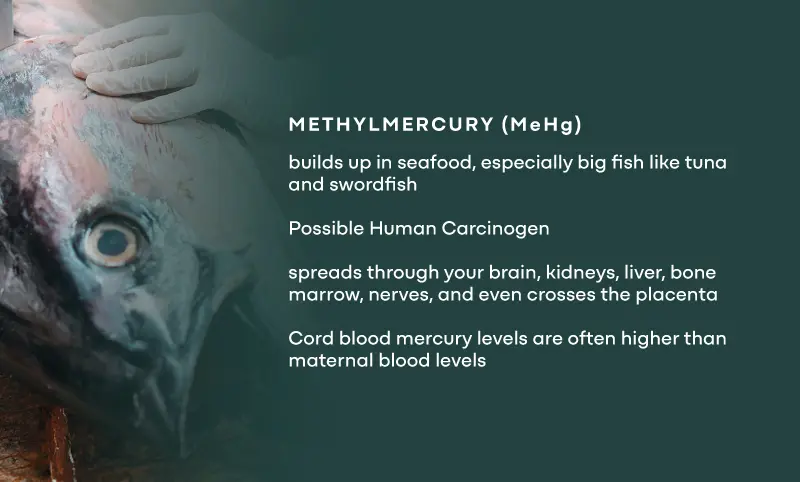
Physical Symptoms
- Chronic fatigue
- Persistent digestive issues (e.g., GERD, leaky gut)
- Unexplained pain or inflammation
- Hormonal imbalances, such as irregular cycles or low libido
- Detox protocols “don’t work” for you (because mercury toxicity makes it harder to detox from other things!)
Mental and Emotional Symptoms
- Shyness, social phobia, or OCD tendencies
- Extreme mood swings
- Brain fog or difficulty focusing
- Symptoms resembling autism or bipolar disorder
Special Topic: Mercury and Candida
Candida isn’t just an opportunistic infection—it’s also your body’s emergency response team for heavy metals, especially mercury.
These fungi are highly resistant to mercury (33, 34, 36), and they don’t just tolerate it—they trap it.
Candida absorbs metals from its surroundings and locks them away in a biofilm, essentially creating a storage unit for toxins (33).
Even more wild?
Candida can convert inorganic mercury into the even more toxic methylmercury and can synthesize mercury nanocrystals to help stabilize its environment (34, 36).
This means candida overgrowth is often your body’s attempt to manage a bigger problem: mercury toxicity.
So, if you jump into a hardcore candida cleanse without first addressing heavy metals, you’re asking for trouble.
Killing off candida too soon releases stored mercury back into your system, overwhelming your detox pathways and making you feel way worse.
Moral of the story? Deal with the metals first, then go after candida—never the other way around.
So, how do you detox from mercury exposure? Let’s look at what NOT to do first!

Common Missteps in Mercury Detox
When it comes to mercury detox, the wrong approach can make things worse. Here’s why:
EDTA Chelation Gone Wrong
Some practitioners use EDTA to chelate heavy metals, but when it binds to mercury, it can create a compound that’s twice as toxic as the original.
That’s a recipe for severe side effects—think diarrhea, intense fatigue, and a flare-up of symptoms that leave you worse off than before.
IV Chelation Without Proper Prep
IV chelation can mobilize mercury, which sounds great—until you realize your body might not be ready to eliminate it.
If your detox pathways aren’t functioning properly, that mobilized mercury just redistributes, lodging itself in new tissues and creating a harsh “retox” reaction.
Many people feel amazing for a day… only to crash hard afterward.
Misusing Glutathione
Glutathione is often hyped as the ultimate detox supplement, but here’s the catch: it’s a mobilizer, not a binder.
That means it stirs up mercury but doesn’t actually remove it.
If you take glutathione without proper binding agents, you’re just kicking toxins around your body, making symptoms worse instead of better.
The key to safe mercury detox? Bind first, mobilize second, and always support your detox pathways before you start moving metals around.
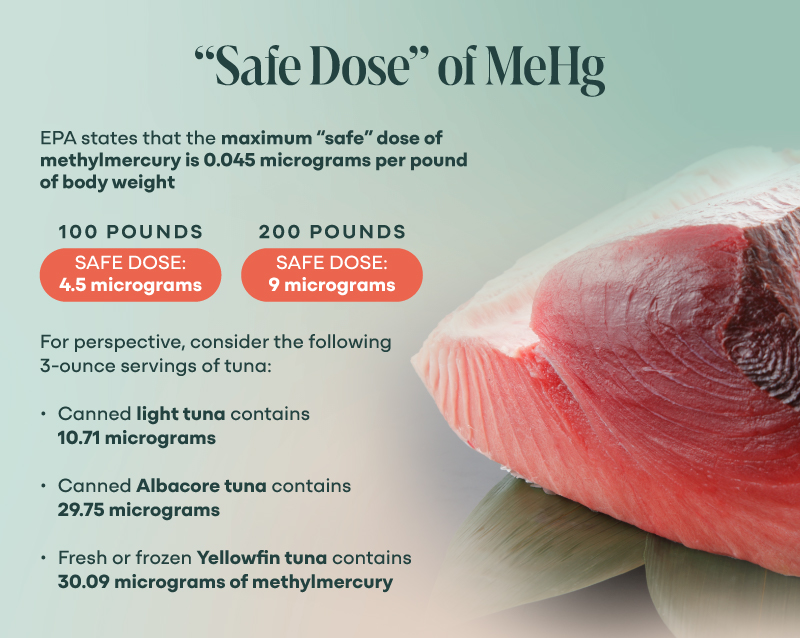
Wrapping Up
Mercury toxicity can be brutal, but it’s not a life sentence.
The most important thing to remember?
Your body is always healing.
You’re not broken; you’re just carrying a burden that your system wasn’t designed to handle.
And now that you know the truth, you can start lightening that load.
The key?
Detox the right way.
That means optimizing drainage pathways first, binding mercury before moving it, supporting your detox organs before pushing them, and never, ever jumping into a candida cleanse before addressing heavy metals (unless you enjoy feeling like death).
This isn’t about a quick fix—it’s about setting your body up for long-term resilience.
Start making small, strategic changes, and above all—trust your body’s ability to heal.

FAQ Section
Q: How do I know if I have amalgam mercury fillings?
A: Look for silver-colored fillings in your teeth. If you’re unsure, consult a biological dentist who can assess your dental work safely.
Q: What are the first signs of mercury poisoning?
A: Symptoms can vary but often include fatigue, brain fog, mood swings, digestive issues, and hormonal imbalances.
Q: Is it safe to remove mercury dental fillings?
A: Yes, but only if done by a trained biological dentist using mercury-safe protocols to minimize exposure during removal.
Q: Can I detox mercury on my own?
A: It’s not recommended. Detoxing mercury requires careful preparation and support to avoid mobilizing it without proper elimination.
Q: Is mercury only a concern from fillings?
A: No, other sources include seafood, industrial pollution, and certain household items like fluorescent bulbs and thermometers.
Q: How long does it take to detox mercury?
A: Detox timelines vary based on individual toxicity levels, overall health, and the methods used. It’s a gradual process that can take months or longer.
Begin Your Healing Journey - Let's Talk About Your Path Forward
While this consultation is complimentary for you, we’ve set aside this time specifically for your needs. We appreciate your commitment to showing up prepared and on time, just as we promise to be fully present for you. 📅 Ready to take a step toward feeling better?
Schedule your conversation with us today.


